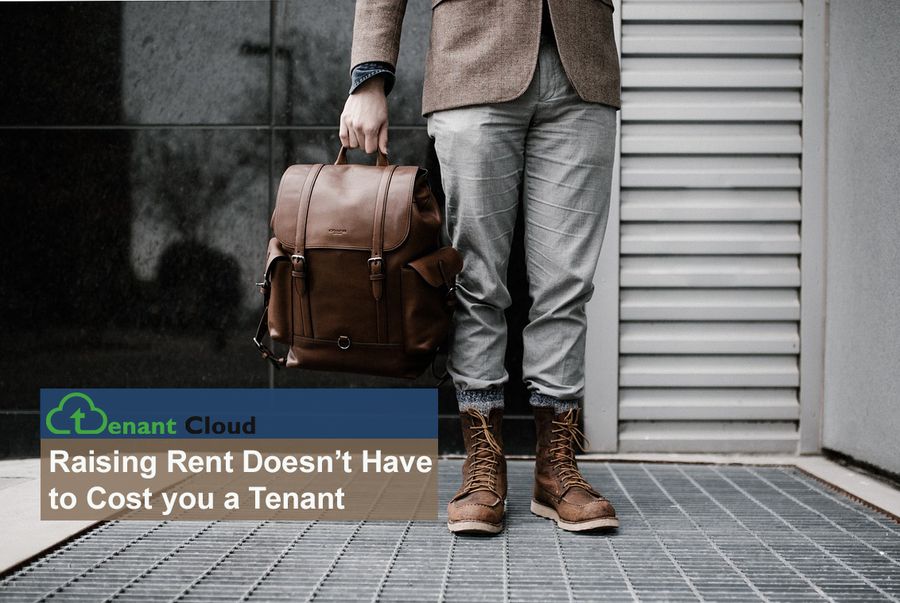We live in such times where everything changes quickly, prices and costs increase, which sends rental rates across the nation up as well. As a landlord you find the costs of maintaining your rental will increase and you will be forced to sell or increase the rent. How you increase rent can make a big difference in whether your tenant moves out or not. If they move out cost of the transition only puts more pressure on the increased expenses for operating your rental. Finding a balance in keeping your tenant during a rate increase is key to maximizing the return on your rental.

Best Time to Increase Rent
To raise rent legally a landlord should check its state’s regulations and check on formal notices that need to be presented and how to the tenants. Sometimes laws can vary not only in states, but also in cities and etc. Though leases are restricted to a time period of which you won’t raise rent you may want to time your leases based on the time of year they expire.
Time periods in which there is a lot of moving often comes with move-in specials, so a tenant looking to move during a rent increase might consider. May and June, for example, are high movement months in most markets as the summer sets in. November and December are often financially straining times for many households as it is the holiday season, so tenants often find it as a negative experience to see rate increases during this time. Off season months like October, February and March are seasonal times when there is lower rental churn and times when moving is less appetizing.
How to Inform Tenants
Make sure you are following the proper legal protocols and posting requirements. Most states require providing notice of at least 30 days, but in surveying tenants it has been expressed that 60-90 days notice is much more appreciated. A notice coming in February for rent increases for April is much less shock and can allow the tenant to feel they have time to prepare, so when 30 days come around they are more accepting to renew their lease. Short notices often send the tenant panicking, which turns into frustration with their landlord. The frustration often turns into a decision to move just to get away from the landlord even if that move is at a cost.
Most states require official notices of rent increases to be provided in writing. Taking time to create a letter that meets both formal postings and more personal than a notice might come with less resistance by tenants. A notice that just stating the rent increase amount leaves the tenant thinking their landlord is a greedy opportunist. Sharing with the tenant examples of the landlord’s cost increases can help tenants be more empathetic of the situation and understanding of why rent is increasing.
Bigger isn’t Always Better
In most cases, a landlord has the flexibility to increase rent as much as the market will bear. Outside of state-specific regulations, finding the proper rent increase is a balance between wanting the highest possible income generated from your investment and maintaining a price point that is competitive and will attract or keep the best tenants. Several factors can affect the market rent for your property. Having knowledge of your local market is key.
Tenants talk and know very well what the local rental market is, so going above market will come with much resistance. Also, if the new rate is set at market highs then the tenant is incentivized to at least look around for a what is in the market. If the tenant moves then you have the costs of a turnover (U.S. average is $1,800) and a loss in rent for the time it is vacant, which varies by market. Setting a rate with these costs in mind help in picking a lower amount that increases the monthly rent, but is still competitive. This helps tenants want to stay and avoids the costs of a turnover. If they do still decide to move then you have the opportunity to raise the rent, so you aren’t out anything by offering a more competitive rate increase.
In conclusion
It’s better not to keep the tenant in the loop and not have rent increases be a shock. Finding the best time to discuss rent increases can be the difference between losing and keeping a tenant. Proper communication can also help tenants be prepared for such change and keep the relationship between tenant and landlord cordial. Setting rent increases to a more competitive amount can also help in keeping costs down and maximize your return. By using these tips you can stay within state requirements while also having a higher probability of keeping your tenants through a rate increase and finding the highest return on your investment.
Best Way To Collect Rent Online: Encourage Your Tenants To Try It
Online Rent Collection: Get Rid of Late Payments and Say No to Paper Checks







